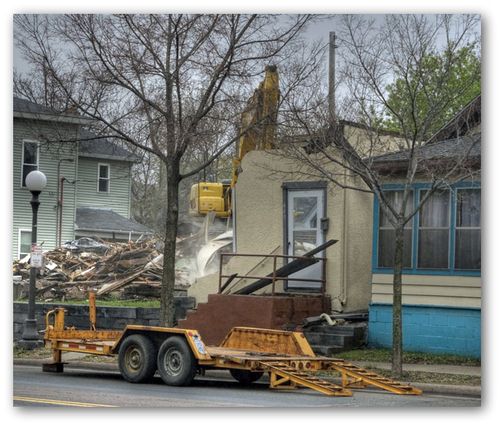
In St. Paul, someone can complain to the city about your property. Maybe they think your grass is too long. Maybe they don’t like you or the way you look. Maybe they want to buy your house and see that you are struggling to maintain it.
Someone complained about a barking dog at my house but we didn’t have a dog.
Another time someone complained about too many cats in our yard. We did not have a cat at the time.
Code enforcement in St. Paul is complaint driven. That means that the city does not pay attention to code violations unless someone complains.
The city can condemn a house. There used to be reports that we could see online through St. Paul property look-up that would show what was wrong with the house. They don’t do that anymore.
After a time and it depends upon the inspector a house can be condemned by the city and after that, the city can make it a registered vacant building and charge $5000 for a permit. There isn’t any consistency in this process. It can go on for months or for a decade.
Elderly homeowners on fixed incomes struggle to make repairs without the added burden of fines from the city. If the fee isn’t paid it gets attached to the already sky-high property taxes They end up living in a car on the property or in a tent near the property because they are not allowed to live in the house.
In order to get the house uncondemned they must pay for a city inspection. City inspectors will go through the house and inspect it and create a list of repairs needed for code compliance. If the owner doesn’t have the house inspected it can sit vacant and condemned for years.
The vacant building permit fee is $5000. That money could be used to fix up the property or to provide housing for homeowners who are not allowed to live in their own homes. At the very least the $5000 should cover an inspection that outlines exactly why the house is condemned.
The forced registered vacant building program does nothing to improve our housing stock. In fact, some of these houses rot as no one is allowed to live in the house. The program does not help improve housing safety for homeowners. In fact, I know of one situation where the elderly homeowner spent Christmas Eve sleeping in his car in sub-zero weather.
The only people I know who own condemned houses that they are not allowed to live in are over 70 years old.
These condemned category 2 houses may even be fit to live in. We don’t really know because the process lacks consistency and transparency. In fact, the city may be violating fair housing laws. I occasionally see houses that are filled with junk and have not been cleaned in years that are not condemned. The system is compliant-driven and lacks transparency.
City inspectors encourage owners of these properties to sell. The new owner would be responsible for the repairs. Is there an age limit on homeownership?
Eventually, the owners have to sell or it is taken from them by a bank or for back taxes. Sometimes the vacant property disintegrates to the point where it has to be torn down.
More often than not seniors who have lived in their homes for decades do not want to leave. In fact, I can’t think of anything that is more cruel forcing an elderly person to leave their home.
Homelessness among the elderly used to be rare now it is the fastest-growing group.
There has to be a better way!

I regularly read the City Council agendas in which they address code violations. I think part of the problem is that once an inspector shows up to review a potential code violation, EVERYTHING in the house is up for examination. The burner on the stove that doesn’t work or the spalling concrete on the driveway hits the list as quickly as the too-tall grass or the broken porch window that started the inspection. Before you know it, the list of corrections extends for a few pages.
I certainly understand the importance of enforcing code, particularly for housing that is being rented to someone else. But making everything in the house — beyond the initial complaint — fair game for code compliance when it is almost a “natural condition” of the property too often ends up moving a solvable issue into eviction and vacancy, a snowball of money that most people (especially the elderly) can’t address.
Very true how everything in the house ends up being inspected and has to be brought up to code. Most houses in St. Paul are very old and not up to code. This is another example of code not being applied evenly. Thanks for reading. You can probably tell I consider this an important issue and am looking for ways to help people wo have been thrown out of their only homes for years by the city.